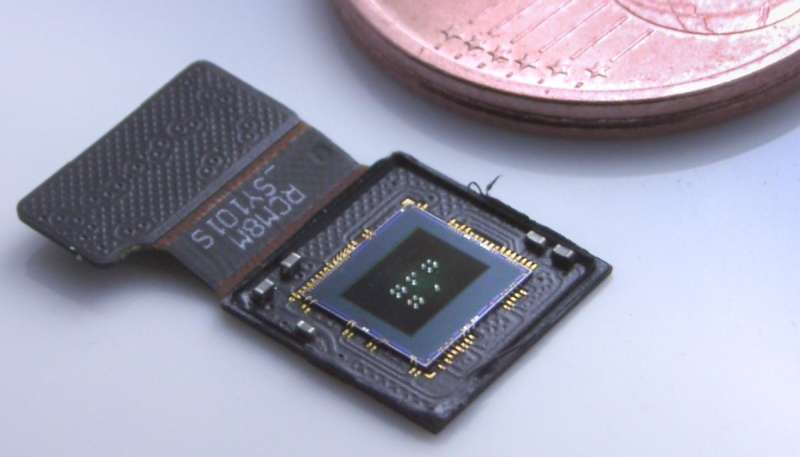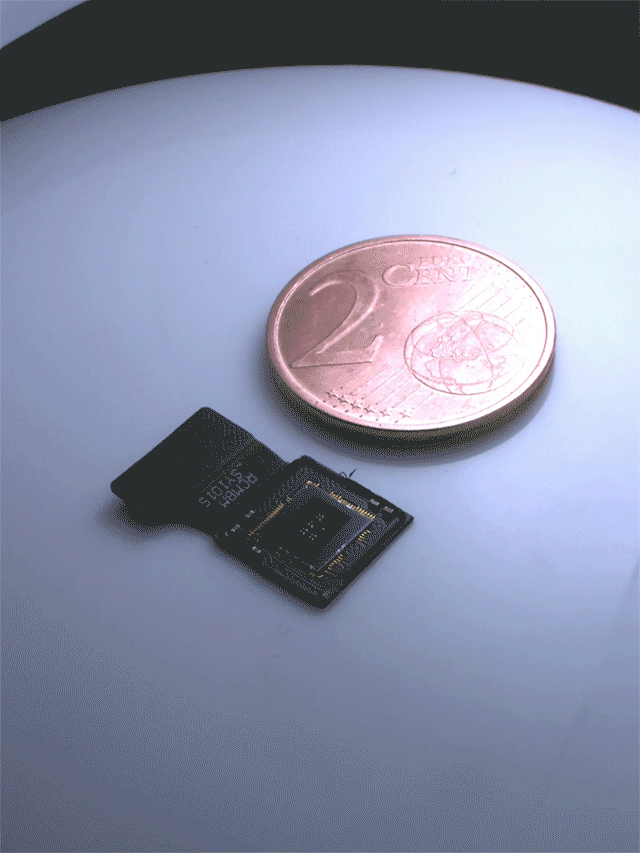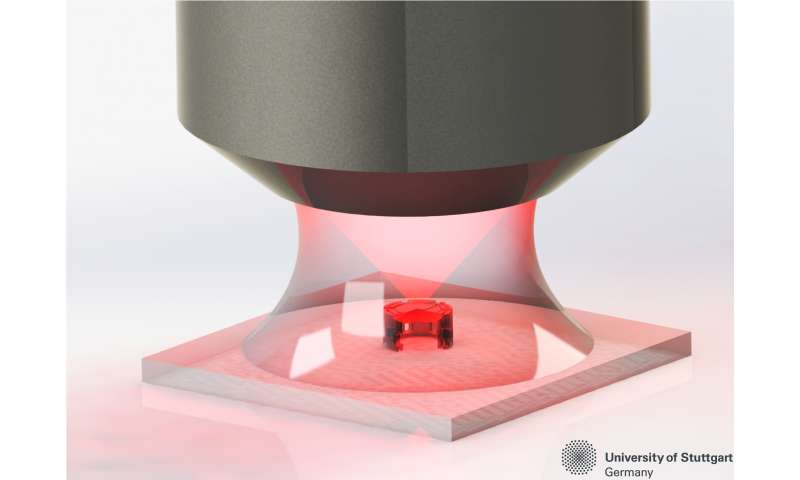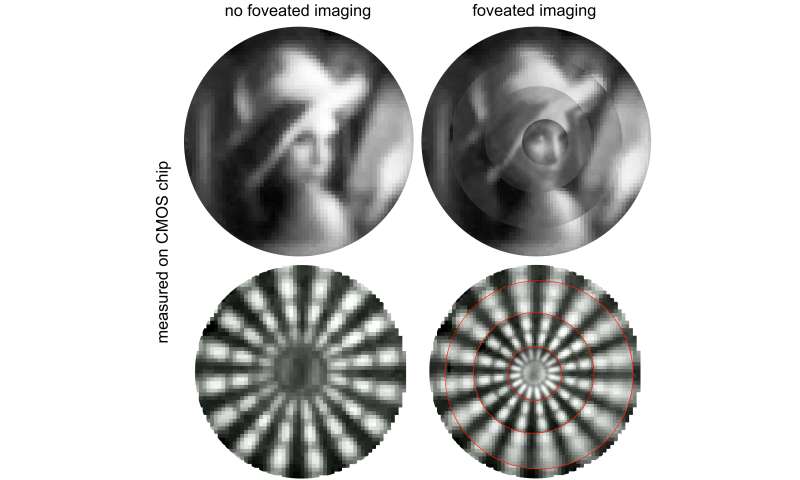February 16, 2017 report
Tiny foveated imaging camera mimics eagle vision

(Tech Xplore)—A team of researchers with the University of Stuttgart has used advanced 3-D printing technology to create an extremely small camera that uses foveated imaging to mimic natural eagle vision. In their paper published in the journal Science Advances, the group describes their approach to creating an extremely small high-resolution camera and possible applications.
Most everyone knows that eagles have better eyesight than humans—they can spot a rabbit on the ground from almost two miles away, for example. But eagles also have what is known as foveated vision, in which only the central part of the eye has superior vision—the areas around the center of the lens provide just enough clarity to allow the bird to avoid running into obstacles while focused in on a target. The fovea is a small indentation at the back of the eyeball providing the highest acuity due to the high concentration of retinal cones.
In this new effort, the researchers sought to mimic eagle vision hoping to produce an extremely small lens (approximately the size of a grain of sand) that would be relatively inexpensive to produce.
To create their camera, the researchers used a high-resolution 3-D printer to lay down four lenses, one on top of the others—each of the layers with a different focal length. Overlaying the images created the fovea effect—only the middle part of the lens provided extremely high resolution—the result was a single 300-micrometer-square lens that was placed onto a computer chip for image processing. The resulting camera provides extremely high resolution at its focused center and less resolution around its perimeter, providing peripheral vision.
The researchers believe their camera could provide high resolution imagery for very small drones, though it is still not comparable to raptor vision—that would require being able to print different material within a single lens. Still, they believe their camera would be ideal for use in search and rescue drones. They also believe the camera could be used in sensors, robots and medical equipment. They note that using 3-D printing technology allows for mass production of the lenses at reasonable prices.
-

The miniaturized camera system, including the image sensor with 3D printed lenses. Credit: Simon Thiele/ Carla Schaffer/ AAAS -

A graphic showing the 3D printing process. Credit: Simon Thiele -

Experimental comparison of foveated and non-foveated imaging. The top images are of a commonly used test image called “Lena”; the foveated image shows increased detailed around the woman’s eye. The bottom images demonstrate foveated imaging performance using a Siemens star test target. Credit: Simon Thiele, Kathrin Arzenbacher
More information: Simon Thiele et al. 3D-printed eagle eye: Compound microlens system for foveated imaging, Science Advances (2017). DOI: 10.1126/sciadv.1602655
Abstract
We present a highly miniaturized camera, mimicking the natural vision of predators, by 3D-printing different multilens objectives directly onto a complementary metal-oxide semiconductor (CMOS) image sensor. Our system combines four printed doublet lenses with different focal lengths (equivalent to f = 31 to 123 mm for a 35-mm film) in a 2 × 2 arrangement to achieve a full field of view of 70° with an increasing angular resolution of up to 2 cycles/deg field of view in the center of the image. The footprint of the optics on the chip is below 300 μm × 300 μm, whereas their height is <200 μm. Because the four lenses are printed in one single step without the necessity for any further assembling or alignment, this approach allows for fast design iterations and can lead to a plethora of different miniaturized multiaperture imaging systems with applications in fields such as endoscopy, optical metrology, optical sensing, surveillance drones, or security.
© 2017 Tech Xplore



















